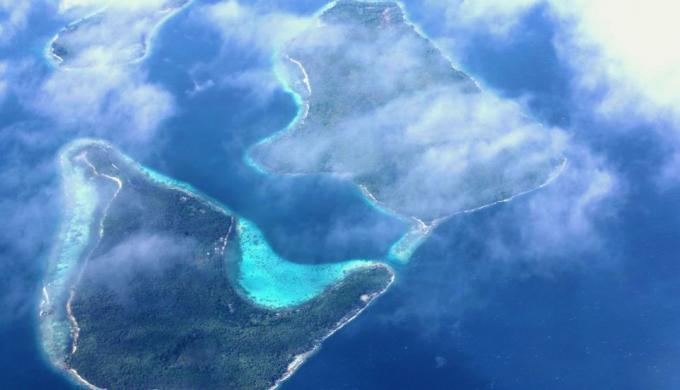THE WEATHER CHANNEL - Scientists have discovered that five of the Solomon Islands have disappeared due to sea level rise.
In a study published in the journal Environmental Research Letters — called the "first assessment of shoreline change from the Solomon Islands" — Australian researchers scoured through "aerial and satellite imagery from 1947 to 2014 of 33 islands, along with historical insight from local knowledge," and identified "five vegetated reef islands that vanished during that time period." Six other reef islands were found to be experiencing "severe shoreline recession." The team also discovered that sea level rise "destroyed villages that have existed since at least 1935, leading to community relocations."
The Pacific nation, which is mainly comprised of six large islands — Choiseul, Isabel, Malaita, and New Georgia, Guadalcanal, Makira — and hundreds of other low-lying atolls and reefs of varying size, has struggled to adapt to the rising tides, which have been attributed to rising global temperatures.
"We were first made aware of the severe erosion on these islands in 2012," Simon Albert, lead author of the study, told weather.com in an email. "A fisherman pointed to an area of reef and said 'there used to be an island here.' We assumed he meant hundreds of years ago, his ancestors had stories about an island being there. However, he said, 'no, it was still there a few years ago.' We were originally a bit skeptical, but after looking through thousands of historical aerial images and comparing to modern satellite imagery we started seeing a trend."
Ben Strauss, a sea level expert at Climate Central, told weather.com in an email that the island is uniquely positioned to experience the brunt of rising sea levels.
"One factor may be that in some parts of the Pacific, sea levels have been rising more swiftly than the global average," Strauss said. "Adaptation efforts can certainly help to some degree, but the cost/benefit equation is going to be very challenging in some areas. I expect that is the case for the Solomon Islands and many other small Pacific islands."
The study noted that the rates of sea level rise in the Solomon Islands are amongst the highest globally. While the global average rate of sea level increase has been 3.2 millimeters a year since 1993, the Solomon Islands have experienced approximately "7 to 10 millimeters of sea level rise."
Steve Nerem, an aerospace engineer at the University of Colorado, Boulder, who specializes in satellite measurements of sea level change, told weather.com in an email that ocean-atmosphere climate variability may also play a factor in the island nation's predicament.
"The extra sea level rise versus the global average is probably due to the Pacific Decadal Oscillation, which is beginning to switch its phase, so the higher rate of sea level rise should lessen soon," Nerem said.
James Titus, sea level rise expert at the US Environmental Protection Agency, told weather.com in an email that the islands haven't kept pace with recent tidal rise.
"The islands are right at sea level, because they are created from material from the coral, which has kept pace with the rising sea for thousands of years," Titus explained. "As a practical matter, you would expect some islands to always be disappearing while storms create a few islands elsewhere, since the material itself that form the islands is not living. The atolls have been rising with the sea for thousands of years, and up to a point, the coral keeps pace—but the islands are made of dead material. So what's more important is whether new islands are still being created to offset what is lost. If not, that may be either because of rising sea level or because people have disabled the natural process of island creation (e.g. by killing coral)."
Titus compared island coast depletion to river deltas, which he said always lose land as other land is created.
"With a rising sea, less is created and past a threshold, the whole delta may get dramatically smaller," he added. "Adaptation is possible up to a point—but at a cost. The islands can be elevated in step with the rising sea, using material from other islands that are lost. Whether that’s worth doing or whether someone will fund it is another matter."

